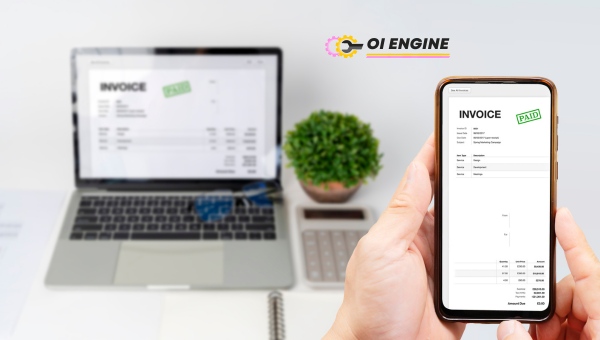If you’ve been flustered with the way your financial records look, you’re not alone. I’ve seen many like you puzzled by the complexity of accounting and bookkeeping. That’s why I decided to unravel the enigma called Double-Entry Bookkeeping – a concept grounded deeply in accounting, but mostly bewildering for most of us.
Remember though, understanding it could be the difference between having your head above water or sinking into a sea of unpaid bills and unrecorded transactions.
While traditionally manual and labor-intensive, double-entry bookkeeping has become less daunting with modern technology.
It is a system where each financial transaction gets recorded twice – once as a credit entry and another as a debit entry. This method’s elegance lies in its simplicity – allowing better accuracy in tracking one’s financial status.
Exploring Double-Entry Bookkeeping
Double-entry bookkeeping is integral to maintaining accurate financial records. It might sound complicated, but understanding its basic principles brings clarity to the big picture of financial management. Let’s dive in and explore this fascinating concept.

What Is Double-Entry Bookkeeping?
At a basic level, double-entry bookkeeping is an accounting system where every transaction is recorded twice – once as a debit and once as a credit.
Imagine I have bought some office supplies for my business; naturally, I’d record the amount I’ve paid out, that’s one entry.
But here’s the difference: In double-entry bookkeeping, I’d also make another entry to show where that money went – in this case for office supplies.
This method gives me an accurate overview of where my money comes from and where it goes – a comprehensive view of my financial picture!
Now you may be wondering why would one go through all this trouble recording every detail. The answer lies in the fundamental principle behind double-entry bookkeeping.
The Principle of Record Twice, Balance Once
The primary principle of double-entry bookkeeping, ‘Record Twice, Balance Once,’ aims to ensure consistency and accuracy in accounting records.
Essentially it means entering every transaction into two different accounts – one account gets debited (where the money goes), while another gets credited (where the money comes from). This duality ensures that everything always balances out.
When talking about balancing figures in double-entry bookkeeping, what we mean is there’s always an equilibrium between what we owe (our debts) and what we own (our assets). It assures that our financial statements are accurate which gives me peace of mind.
The Basis Of Double-Entry Bookkeeping System
Now let’s understand what forms the basis for a double-entry bookkeeping system—the equation: Assets = Liabilities + Equity.
It’s simple math! Any change to an asset account requires an equal and opposite change to a liability or equity account.
This equation is an absolute truth in accounting. It keeps all transactions synced up and ensures our books always balance.
If they don’t, it signifies that something has been missed out or misplaced, which indicates that I need to find the issue and correct it—another layer of error-checking built right into the system.
This intrinsic feature of double-entry bookkeeping prevents mistakes from snowballing into bigger problems down the line, saving me lots of time, energy, and frustration later on.
Although at times it may feel like extra work, I assure you that this diligent process helps paint an accurate picture of my business’s financial health—a worthy cause indeed!
Also Read: Autonomous Trucking Revolution: The Future Rides On AI
Single Vs Double Entry Systems
In our journey of understanding double-entry bookkeeping, comparing it to its simpler counterpart, single-entry bookkeeping is an ideal starting point.

These two systems spawn from the need to effectively manage financial transactions but they differ considerably in their structures and implications.
Single-Entry Bookkeeping
You can liken single-entry bookkeeping to your checkbook. It’s a simple way to keep track of income and expenses without much complexity.
This approach might be easier, but let’s unpack some of the merits and demerits:
Advantages:
- Simplicity: Only one line is required for each transaction making it quick and easy to record.
- No professional knowledge needed: It doesn’t require specialized accounting knowledge to maintain.
- Ideal for small business owners: Because of its simplicity, small businesses with minimal transactions find this system best suited for them.
- Easy data retrieval: Since all data are in one place, it’s easy to find specific information quickly.
- Cost-effective: Lower setup costs make it an affordable choice for startups or freelancers.
Disadvantages:
- Lack of detail: Single-entry system only provides a minimalistic view which may not give a comprehensive picture of profitability or financial health.
- Inaccuracy: Due to its simplicity, errors occur easily when recording expenses or revenues.
- Lack of error detection mechanism: Without balance checks available in double-entry bookkeeping systems, inaccuracies might go unnoticed creating major complications down the pipeline.
- Difficulty in financial tracking and planning: The absence of distinct categories for liabilities/owner equity could make planning more challenging.
- Unsuitable for larger firms: This basic framework struggles when handling higher volume and diverse transactions.
Investing Time and Effort in Double-Entry Bookkeeping
Believed to be as ancient as the 13th Century, double-entry bookkeeping has stood the test of time. It’s a system that offers a complete glance at your finances, documenting not only where your money has gone but also showcasing its current position and source.
Quick run-through on its pros and cons:
Advantages:
- Comprehensive Overview: Double-entry bookkeeping gives a fuller picture illustrating all inflow/outflow of money.
- Avoiding Errors: Every transaction must balance out, encouraging accuracy.
- Insightful projections: The detailed nature of this format allows companies to make more informed decisions for future trading.
- Compliance with statutory regulations: Larger corporations often require audited financial statements which are feasible through this method.
- Scope for scaling up: This method can flexibly accommodate an increasing number of transactions.
Disadvantages:
- Increased complexity: Recording two entries for every transaction could be perceived as unnecessarily complex by some.
- Requires Accounting Knowledge: Unlike single-entry, you may need professional expertise or training to deal with double-entry bookkeeping efficiently.
- Time-consuming: Inputting twice as much data requires more time and effort making this process slower compared to a single-entry system
- Increase in Cost: To maintain accurate records professional assistance might be essential thus potentially escalating costs
- Slow Set-Up: Being comprehensive would mean additional groundwork needed initially when setting up accounts and fields.
These are some aspects worth pondering over while picking between Single vs Double-Entry systems.
Also Read: Thanksgiving’s Most Dangerous Roads: Tips & Warnings
Who Uses Double-Entry Bookkeeping?
In the vast world of financial transactions, some consistently use double-entry bookkeeping for their records. Its methodical nature and built-in checks make it invaluable to many people in varied roles.
The Persons Who Use Double Entry Bookkeeping
It’s not just financial gurus who use double-entry bookkeeping. The list is more extensive than you might realize.
- Small Business Owners: When running a business, particularly as the owner, keeping accurate accounts becomes a top priority. I may not be an accountant myself, but understanding money in and out of my business isn’t just helpful – it’s integral to success. Double-entry bookkeeping helps balance their debits against credits and identifies discrepancies quickly.
- Freelancers: Many freelancers handle their invoicing and expenses. They employ double-entry bookkeeping to keep track of these transactions accurately. It ensures that they don’t miss claiming business expenses or forget about outstanding invoices from clients.
- Accounting Professionals: These professionals, by default, use a double-entry system to ensure balances are equal and correct the accounting equation (Assets = Liabilities + Equity). It’s the backbone of almost all modern accounting work they do.
- Large Corporations: Enterprise-level finance utilizes double-entry bookkeeping on an enormous scale since it provides a layer of protection against human error or fraudulent practices.
Those involved in any form of business – from small-scale businesses to freelancers, accountants to large corporations – will discover how indispensable double-entry bookkeeping becomes for quick checks on accuracy and ensuring financial stability in their endeavor.
Implementing Technology in Accounting
In the dynamic world of business, the need for accuracy and efficiency has led to the integration of technology into accounting.

One such advancement is the advent of double-entry bookkeeping software. This innovative technology allows transactions to be recorded twice – as debits and credits – enhancing precision and reducing human error.
Incorporation of Double-entry Software in Modern-Day Business
- With the business landscape changing rapidly, double-entry bookkeeping software has established its vital presence. Its implementation in modern-day enterprises brings about multiple benefits.
- Firstly, it enhances efficiency. By automating repetitive tasks such as data entry, I save myself a great deal of time that can be channeled toward other productive aspects. The software significantly reduces manual labor and helps prevent errors that might occur through manual administration.
- Secondly, it increases my accuracy levels. For instance, when I record transactions manually, there’s always a chance of making an error – no matter how minor it may seem at first glance. But with double-entry software, this margin for error is minimized significantly because these programs are designed to be precise.
Change Brought About By Double-Entry Bookkeeping Software
- One significant change I’ve observed after using double-entry bookkeeping software is an improvement in record-keeping. This tool maintains records neatly and orderly, providing me with organized financial reports whenever necessary.
- Furthermore, it brings about transparency in my dealings- something that’s immensely appreciated by both clients and stakeholders alike. These platforms generate accurate financial statements which lay out all activities transparently thereby boosting trust between clients and myself.
Implementing double-entry bookkeeping into my routine has undeniably transformed my working style for the better!
Types Of Accounts In The Sea Of Transactions
In the vast ocean of financial transactions, different types of accounts play distinct roles within Double-Entry Bookkeeping.

Navigating through these may look challenging, but with an understanding of their functions and purposes, it becomes a streamlined process. Let’s dive in to understand them better.
Business Asset Account
An asset is anything I own that has economic value. Within a business context, they represent what helps in generating income. Within the Business Asset Account, there are two main types of assets:
- Tangible Assets: These are physical entities that we can touch and see, like machinery, buildings, or inventory.
- Intangible Assets: I cannot touch these but they play a crucial role in operations such as copyrights or patents.
- Current Assets: These include cash, inventory, and things that can be converted to cash within a year.
- Non-current Assets: They include long-term investments and properties.
- Fixed Assets: These are bought for long-term use and are not expected to be converted quickly into cash.
Dealing with Debts
Debts or liabilities in financial lingo house items the company owes. Whether short-term or long-term, they present an obligation that needs to be met.
Just like assets, debts also diverge into various kinds:
- Current Liabilities: These debts need to be paid off within one year such as wages payable or accounts payable.
- Long-Term Liabilities: I owe these beyond the timespan of one year like mortgage loans.
- Contingent liabilities: It’s dependent on future events. For instance, if I am sued and lose the legal battle, I may need to pay a huge sum.
- Unearned Revenue: This is when customers pay me early for my services which I have yet to deliver.
- Accounts Payable: It is when I receive goods or services from my supplier but will pay them later.
Equity Accounts
Equity accounts come into play in the double-entry bookkeeping world to depict the value of an owner’s interest in a business after liabilities have been deducted from assets.
There are several types of equity accounts, including:
- Owner’s Capital: This is the initial amount invested by me into my business.
- Owner’s Draw: It means any personal withdrawals I make from my company’s profits.
- Retained Earnings: These reflect profits that get reinvested back into my business instead of being distributed among shareholders.
- Common Stock: If you own a share of this stock, you are transitioned from being just an investor to a partial owner within a corporation.
Monetary Gains
Monetary gains, also known as revenue, refer to all income I generate through carrying out regular business transactions. Various forms of monetary gains can be realized:
- Sales Revenue: The gross income produced by selling goods or services.
- Interest Income: Its source is lending some form of asset in return for payments on loans or credit lines extended to clients in the course of operations.
- Rental Income: It’s gained when I allow someone else to use my property for an agreed-upon price and timespan.
Coping With Business Costs through Expense Account
In any venture, there are inevitable costs related to daily operations that need adequate management. This is where an expense account comes in handy:
- Payroll Expense: The largest part often goes towards employee salaries and benefits.
- Rent Expense: Cost that goes into leasing property if one isn’t owned by me directly.
- Supplies Expenses: These are office supplies needed for day-to-day functioning.
- Advertising Expenses: Resources spent on marketing efforts fall under this category.
- Finally, things such as utilities like water and electricity also contribute towards expenses.
All these aspects when successfully integrated reflect where the money comes from and where it’s headed.
It prompts actionable understanding and strategic impact on financial decisions making Double-Entry Bookkeeping a faithful ally in the financial journey of any venture.
Also Read: Why Are Your Auto Insurance Rates Skyrocketing?
FAQs
What are the 3 basic rules of double-entry bookkeeping?
In double-entry bookkeeping, there are three fundamental rules. First, every financial transaction impacts at least two accounts. Second, for each transaction, a debit must equal a credit. Thirdly, assets equal liabilities plus owner’s equity.
Is double-entry bookkeeping hard?
While it requires a keen eye for detail and an understanding of financial transactions, once you grasp the fundamental principles, double-entry bookkeeping is easy to manage. Practice and application make it much simpler over time.
What is bookkeeping and examples?
Bookkeeping involves recording all financial transactions of a business in an organized manner. Examples include recording sales revenue when products are sold or recognizing expenses when they’re incurred.
What is the principle of double entry?
The principle of double-entry dictates that each financial transaction affects at least two accounts – one must be debited while the other gets credited with an equal amount ensuring overall balance within the accounting equation.
How do you calculate double entry?
To calculate in a double-entry system means debits should always equal credits. If a company bought supplies worth $500 on credit – the ‘Supplies’ account will increase by $500 (debit) whereas Accounts payable would increase likewise (credit). This maintains balance in ledgers across all transactions.
Conclusion
Double-entry bookkeeping is a fundamental aspect of modern business. From increasing the accuracy of records to promoting financial transparency, this system has numerous benefits.
With the incorporation of technology in accounting through Double-entry software, our transactions have become much more manageable.
If you understand the difference between single and double-entry systems and are aware of the various types of accounts involved in transactions, you are already ahead! So let’s embrace Double-Entry Bookkeeping and keep our businesses running harmoniously.
